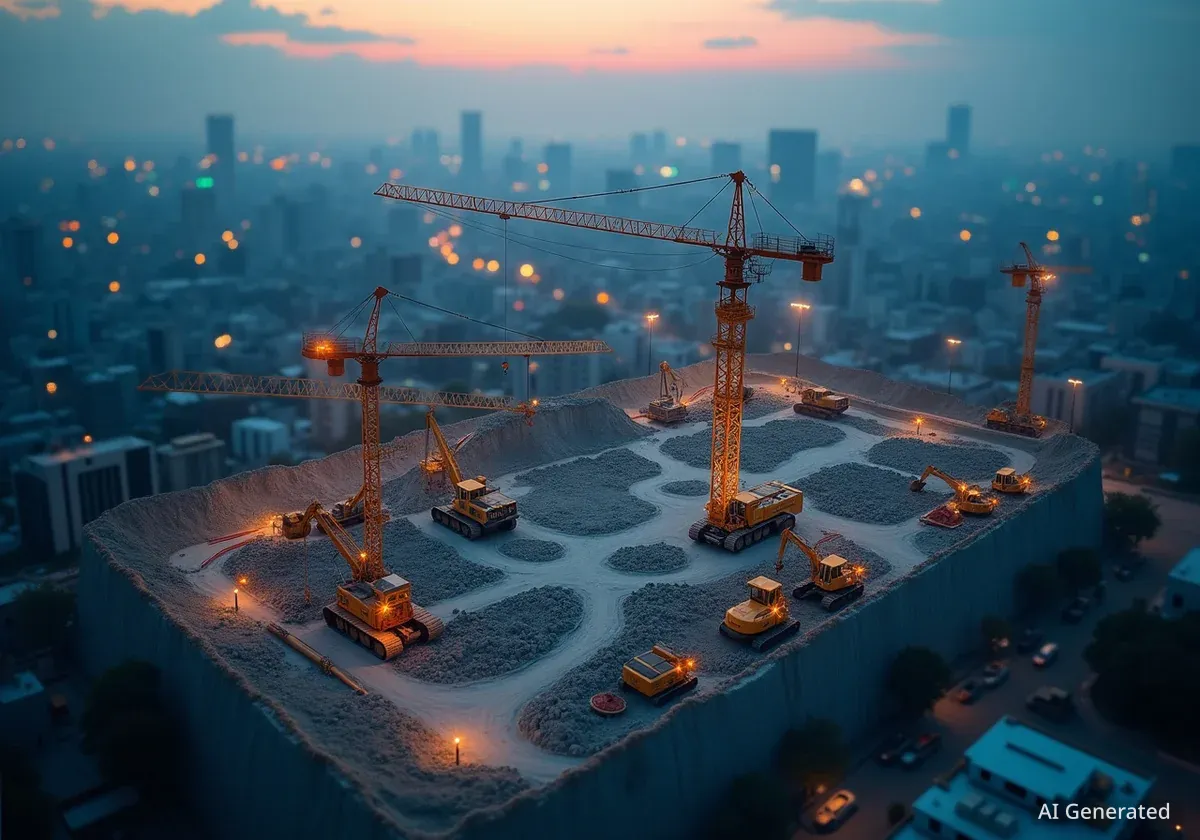Washington, D.C. is undergoing a significant transformation driven by several large-scale development projects. From the expansion of its waterfront to the potential relocation of major sports teams and the redevelopment of historic sites, these initiatives are poised to alter the city's economic and physical landscape for decades to come.
Key Takeaways
- Several multi-billion dollar projects are underway, including the redevelopment of the RFK Stadium campus.
- Monumental Sports & Entertainment has proposed a new $2 billion sports and entertainment district in Alexandria, Virginia, which would move the Capitals and Wizards out of D.C.
- The former Walter Reed Army Medical Center is being converted into a large mixed-use community with housing, retail, and healthcare facilities.
- These projects focus on creating mixed-use environments that combine residential, commercial, and public spaces to revitalize key areas of the city.
The Future of the RFK Stadium Campus
One of the most significant redevelopment efforts in the District centers on the 190-acre campus of the former Robert F. Kennedy Memorial Stadium. The site, which has been largely underutilized since the departure of its last major sports tenant, is the subject of ambitious plans to create a vibrant new neighborhood.
The D.C. government, under Mayor Muriel Bowser, has been actively pursuing control of the federally owned land to move forward with redevelopment. Legislation passed by the U.S. House of Representatives in early 2024 would extend the District's lease on the site for 99 years, a critical step for securing long-term investment.
A Vision for a New Community
Initial plans from the city envision a multi-faceted destination. The proposal includes thousands of new housing units, with a significant portion designated as affordable housing. It also features commercial and retail space, extensive public parks, and recreational facilities.
A central element of the discussion has been the potential for a new stadium for the Washington Commanders NFL team. While the team is now exploring sites in Maryland and Virginia as well, the possibility of an NFL return to D.C. remains a key component of the city's vision for the RFK site.
Historical Context of the RFK Site
Opened in 1961, RFK Stadium was a landmark venue, home to the Washington Redskins (now Commanders), the Washington Senators (MLB), and D.C. United (MLS). Its location along the Anacostia River makes it a prime piece of real estate for large-scale urban renewal.
A New Era for D.C. Sports Venues
The landscape for professional sports in the capital is facing a potential seismic shift. Monumental Sports & Entertainment, the owner of the Washington Wizards (NBA) and Washington Capitals (NHL), has announced a major proposal that would relocate the teams from their longtime home at the Capital One Arena in downtown D.C.
The Proposed Virginia Entertainment District
The plan involves a partnership with Virginia Governor Glenn Youngkin to build a $2 billion sports and entertainment district in Alexandria's Potomac Yard. The 12-acre campus would include a new arena, a global headquarters for Monumental, a performing arts venue, and an expanded esports facility.
"This is a visionary project that will bring together sports and entertainment, creating a world-class destination for our region," said Ted Leonsis, CEO of Monumental Sports & Entertainment, during the announcement.
The project is projected to create an estimated 30,000 jobs and generate a significant economic impact for Virginia. However, the proposal has faced hurdles in the Virginia state legislature and has prompted a counter-offer from D.C. to keep the teams in the city.
Economic Projections
According to an analysis presented by Governor Youngkin's office, the Potomac Yard project is estimated to have a combined economic impact of $12 billion for the Commonwealth of Virginia and the City of Alexandria over the coming decades.
D.C.'s Bid to Retain Its Teams
In response to Monumental's announcement, D.C. Mayor Muriel Bowser has proposed a $500 million public investment to renovate and modernize the Capital One Arena. The goal is to keep the teams in their current downtown location, which has been a major anchor for the Gallery Place-Chinatown neighborhood since it opened in 1997.
The future of the teams remains uncertain as both proposals are debated by lawmakers and the public. The outcome will have a profound effect on the downtown economies of either Washington, D.C. or Alexandria.
Transforming Walter Reed
Another transformative project is the redevelopment of the former Walter Reed Army Medical Center campus in Northwest D.C. The historic 66-acre site is being converted into a master-planned community known as The Parks at Walter Reed.
The multi-phase project is one of the largest development efforts currently underway in the District. When complete, it will feature over 2,100 residential units, including apartments, condos, and townhomes. A key feature is the commitment to affordable housing, with 20% of the units reserved for households earning below the area's median income.
- Housing: More than 2,100 new homes.
- Retail: 150,000 square feet of grocery, shopping, and dining.
- Office Space: 325,000 square feet for office and medical use.
- Public Space: 20 acres of parks and open green space.
The development also includes a Hyatt hotel, educational facilities, and spaces for arts and culture. The project emphasizes historic preservation, with many of the campus's original buildings being adaptively reused. This approach aims to blend the site's rich history with modern urban living.
Waterfront and Downtown Revitalization
The redevelopment of D.C.'s Southwest Waterfront, known as The Wharf, has already dramatically changed the city's relationship with the Potomac River. The completion of its second phase has added new hotels, residential buildings, restaurants, and public piers.
While this project is largely complete, its success has spurred further interest in waterfront development along the Anacostia River, connecting with the RFK campus plans. These projects collectively signal a new chapter in Washington, D.C.'s urban development, focusing on creating dense, walkable, and amenity-rich neighborhoods.





